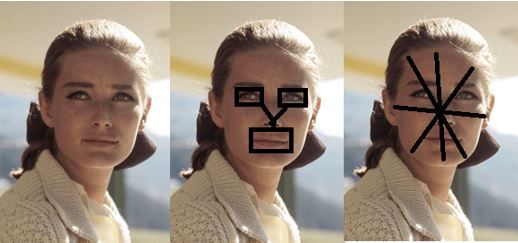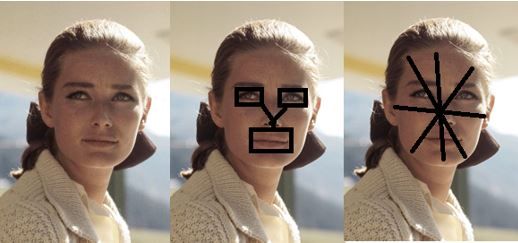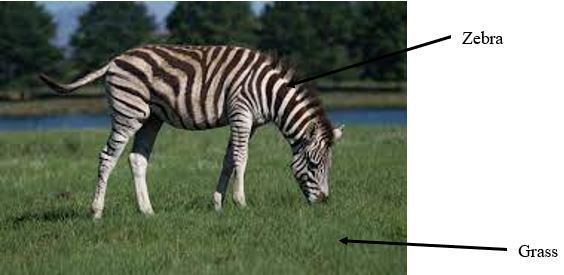Computer based Faced Recognition - Traditional vs Modern

A facial recognition system is a technology that can match a face on a digital photograph or video to a database of other faces (Kaspersky, 2021). These systems are often used for user authentication and operate by finding and quantifying face traits from an image. In the face recognition procedure, computer algorithms are used. These algorithms extract a variety of elements of a person's face (such as the distance between two facial features), which are then turned into numerical data, extracted and put in comparison with a database of faces. Since the 1800s, the notion of recognizing individuals by their faces has existed. Posters advertising prizes for information leading to the apprehension of alleged criminals are put across a city in an attempt to track down individuals responsible for the crimes (Schelle, 2020). In 1991, Turk and Pentland extended the work of Sirovich and Kirby (who used linear algebra to the issue of facial identification) by determining ways to recognize faces inside a picture, leading to the initial examples of automated facial recognition. As a consequence of recent advancements in artificial intelligence technology, the use of computerized face recognition has grown more widespread. These developments, which include the development of machine learning capabilities, have increased the system's precision and accessibility. The significance of this is that it implies that face recognition can now operate at an even larger scale. As a result, this article aims to explore traditional and modern forms of facial recognition technologies.
Traditional
Bledsoe, along with Wolf and Bisson, began work in 1964 and 1965 on enabling computers to recognize human faces. Initially, they would manually mark the numerous "landmarks" on the face, for instance, the distance from the centres of the eyes to the nose (Schelle, 2020). Then, the images were mathematically converted by a computer to account for any inherent changes in position. However, the limitation of this is that it required the full face to be shown, and any side profiles would not be recognised nor covered faces (see Figures 1 and 2).


In the year 1988, the first case of linear algebra being used in facial recognition occurred in the study by Kirby and Sirovich (1990). In 1991, Turk and Pentland extended the work of Sirovich and Kirby (1990) by discovering ways to identify faces inside a photograph through the use of a computer by applying algebra. This was the first step toward the creation of face recognition technology. For the 2006 Face Recognition Grand Challenge (FRGC) tests, high-resolution face photographs, 3D face scans, and iris pictures were employed. The objective of the competition was to advance the status of facial recognition technology, this allowed further improvements to occur, for instance, facial detection on photos with lower resolution.
Modern
Yann LeCun, in the year 1998, made a substantial contribution to the area of picture recognition with his ground-breaking work on artificial neural networks, allowing for deep learning to become a concept (Schelle, 2020). Deep Learning is a subfield of machine learning that focuses on creating algorithms called artificial neural networks that are similar to that of the structure of the brain (Singh et al., 2020). As a result, deep learning processes can be utilised in comparing the unique measurements of each face to a database of previously identified faces. The face in your database that fits the measurements of the face in question most closely will be regarded as the best option for a match.
When building a facial recognition network, it is better to use convolutional neural networks due to their higher image recognition capabilities than previous traditional methods, such as linear algebra algorithms. The fundamental benefit that neural networks provide to the area of facial recognition is their ability to teach a system to recognize a class of complicated face patterns. This means that identifying the faces of individuals becomes easier. In addition, Character and object recognition (see Figure 3) are two examples of common recognition problems that neural networks have solved well. They are also able to identify faces in different positions (see Figure 4).


Conclusion
In facial recognition, distinct algorithms for face detection and feature extraction are used to identify faces. Using typical machine learning techniques, it is frequently essential to deconstruct a problem into its component pieces and then solve each step of the problem separately, meaning to identify a face, manual work must be done at first. Using standard techniques for machine learning enables us to comprehend why a certain algorithm produced a particular result. This is not always the case, however, when we use deep learning. Deep learning removes the need for tedious and time-consuming human coding, which is required for conventional machine learning techniques such as feature identification and extraction. Deep learning is more successful when applied to large datasets, but traditional machine learning techniques may be more useful when applied to smaller datasets. Deep learning, although often requiring more resources than typical machine learning techniques, has the potential to provide more accurate results. Deep learning can also introduce more abilities, such as identifying objects and characters and faces in more difficult situations (low resolution different angles, face cover etc.).
References
Kaspersky (2021). What is Facial Recognition – Definition and Explanation. [online] www.kaspersky.com. Available at: https://www.kaspersky.com/resource-center/definitions/what-is-facial-recognition [Accessed 21 Jul. 2022].
Kirby, M. and Sirovich, L., 1990. Application of the Karhunen-Loeve procedure for the characterization of human faces. IEEE Transactions on Pattern Analysis and Machine Intelligence, 12(1), pp.103-108.
Schelle, F. van (2020). The evolution of facial recognition: from bodycams to video surveillance. [online] www.securityinformed.com. Available at: https://www.securityinformed.com/insights/evolution-facial-recognition-body-cams-video-co-7121-ga.1535016202.html [Accessed 21 Jul. 2022].
Singh, N.S., Hariharan, S. and Gupta, M., 2020. Facial recognition using deep learning. In Advances in Data Sciences, Security and Applications (pp. 375-382). Springer, Singapore.
Author Biography
Abdelbasit Lemamsha was born in Libya in 2005. He is currently studying Maths, Further Maths and Biology in a sixth-form in Sheffield, UK.

Cite this article as:
Abdelbasit Lemamsha, Computer based Faced Recognition - Traditional vs Modern, theCircle Composition, Volume 3, (2022). https://theCircleComposition.org/computer-based-faced-recognition-traditional-vs-modern/
